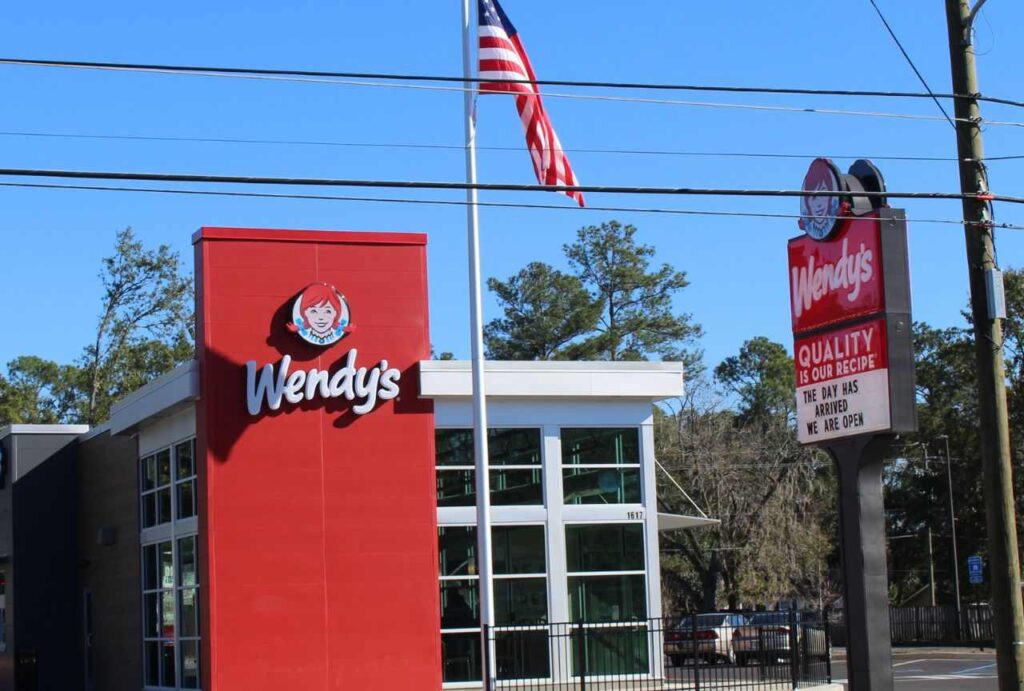The news of Wendy’s restaurant closing hundreds of locations has raised concern among consumers, employees, and market analysts alike. Once known for its steady growth and loyal customer base, Wendy’s now joins a growing list of major companies scaling back operations amid a tightening economic climate.
The company’s decision to shut down an estimated 200 to 350 restaurants by 2026 comes at a time when the fast-food industry faces declining traffic, higher costs, and a wave of restructuring similar to what’s being seen across retail, tech, and manufacturing. With roughly 5,879 Wendy’s locations currently operating across the U.S., the upcoming closures represent one of the brand’s most significant network adjustments in years
This development follows months of corporate downsizing in several sectors, with companies such as Amazon, Microsoft, and even McDonald’s announcing significant job cuts in 2025. The broader economic slowdown, combined with rising wages and inflation, has made it increasingly difficult for many businesses to maintain profitability at the same scale.
For Wendy’s, the closures mark one of its most strategic yet challenging moves in recent years, signaling a major shift in how large restaurant chains are adapting to new market realities.
Why Wendy’s Is Closing Hundreds of Locations
In a move that’s catching the attention of both fast-food consumers and industry analysts, Wendy’s has announced that it plans to shutter a substantial number of its U.S. restaurants. On its latest earnings call, the company revealed it will close a “mid-single-digit percentage” of its roughly 6,000 U.S. locations, equating to about 200 to 350 restaurants — between now and 2026. This announcement follows the closure of roughly 140 stores last year.
While the brand remains iconic; known for its square burgers, Frosty desserts and drive-thru presence; the decision to close hundreds of units is a clear indication that Wendy’s sees the need for a significant reset. The company is now executing its “Project Fresh” turnaround plan, introduced in October 2025, aimed at streamlining operations, improving profitability, and focusing on performance rather than pure growth.

Also Read: DOGE, GEICO, Nestle, And More – 10 Biggest Layoffs Announced So Far in 2025
What’s behind the closures?
First and foremost, many of the locations marked for closure are those that are “consistently underperforming” and are “a drag from a franchisee financial performance perspective,” according to interim CEO and CFO Ken Cook. Without a public list of affected sites yet, Wendy’s is using performance data to identify units whose economics and operations fall short of the brand’s standards.
Sales data makes the challenge visible: Wendy’s domestic same-store sales dropped 4.7% in the third quarter; a stark contrast to rivals like McDonald’s and Burger King, each of which recorded growth. The brand faces a combination of headwinds: rising commodity and labor costs, slower consumer traffic, and increasing competition both from within the burger sector and from digital-first or delivery-centric concepts.
Moreover, Wendy’s acknowledges that some of its restaurants are simply outdated, mis-positioned or unable to deliver the kind of customer experience the company now wants to emphasize. As Cook put it: some units “do not elevate the brand and need to be addressed.”
How will this closure play out?
The closures will begin late in 2025 and extend into 2026. With about 6,000 U.S. locations, shutting 200-350 units represents roughly 3-6 % of the system — significant, but not a sign of commoditization or collapse. Instead, Wendy’s appears to be making a surgical retreat: focusing resources on the best locations, upgrading others, and eliminating the worst performers.
In practical terms, this might mean:
- Closing units permanently in markets where operations are no longer viable or brand positioning is weak.
- Upgrading or re-franchising some units to bring them into line with new standards.
- Shifting capital away from new unit growth (in the U.S.) toward improving existing units and boosting average unit volume (AUV).
For franchisees, this signals a moment of reckoning: those owning weaker locations may need to invest heavily, relocate, or exit. For employees and local communities, closures may mean job losses or site repurposing, particularly in markets with multiple Wendy’s nearby.

What does this closure mean for the fast-food industry?
Wendy’s restaurant closure is emblematic of several broader shifts:
- Scale isn’t enough. Having thousands of units globally no longer guarantees success. Brands must ensure each store performs well, feels relevant, and delivers a strong customer experience.
- The cost pressure is real. Inflation in commodities and labor is squeezing margins everywhere. Turning off underperforming units is one way to protect profitability.
- Consumer behaviour is changing. Increasing expectations for digital ordering, loyalty, customization, and delivery mean restaurants must invest and adapt. Wendy’s recounts that earlier it may have confused customers through too many promotions rather than focusing on value and clarity.
- Rival chains are gaining share. Wendy’s peers, such as Chick-fil-A, are reportedly avoiding the same trend of closures by focusing tightly on operations and customer experience.
- Real-estate dynamics matter. As restaurants close, the question arises: what happens to the real estate? Drive-thrus, anchor pads in retail plazas, and well-located sites may get repurposed, which has ripple effects in local commercial ecosystems.
What to keep an eye on next
- Location list disclosures – Wendy’s has not yet listed the specific stores to be closed. Once released, media and local stakeholders will analyze which markets are affected.
- Next earnings report – Will Wendy’s begin to reverse the same-store sales decline? Will AUV improve? Will margin improvements show up?
- Franchisee behaviour – Will some franchisees double down (upgrade stores) or exit early? Will Wendy’s shift its unit growth focus abroad vs U.S.?
- Consumer perception – Will Wendy’s use this as a pivot to reposition the brand (e.g., focusing on chicken tenders, as they already indicated strong demand) and win back traffic?
- Competitive move – How will competitors respond? Will they expand into markets vacated by Wendy’s or tighten their hold where Wendy’s exits?
Wendy’s Restaurant Closing Adds to the Growing Wave of Job Cuts
The announcement of Wendy’s restaurant closing hundreds of locations comes at a time when large-scale job cuts are reshaping multiple industries across the United States. The decision by Wendy’s to close 200 to 350 restaurants will contribute further to the growing number of layoffs affecting both hourly workers and franchise employees.
The closures align with a broader trend of corporate restructuring that has accelerated through 2025. Businesses are confronting higher labor expenses, increased operational costs, and a changing spending pattern among consumers. The Wendy’s restaurant closing plan highlights how even strong, recognizable brands are not insulated from the pressure of reduced profit margins and tighter economic conditions.
Economists point out that these closures mirror the ongoing shift toward operational efficiency rather than rapid expansion. For employees, this trend reflects a competitive labor market where service-sector jobs are increasingly vulnerable to automation, consolidation, and cost adjustments. For the overall economy, Wendy’s decision reinforces the message that 2025 continues to be a challenging year for employment stability, with companies across sectors prioritizing financial resilience over workforce growth.
More Sources
Wendy’s to Close Hundreds of U.S. Restaurants by 2026 — Fast Company
Wendy’s Announces Sweeping Closures Across the U.S. Starting in Late 2025 — The Economic Times
Wendy’s to Shut Hundreds More Outlets After Closing 140 Last Year — Livemint
Wendy’s to Close Hundreds of U.S. Restaurants — Nation’s Restaurant News
Key Trends Shaping the Restaurant Industry in 2025 — Food On Demand
Chick-fil-A Avoids the Trend That’s Hurting Wendy’s — The Street



